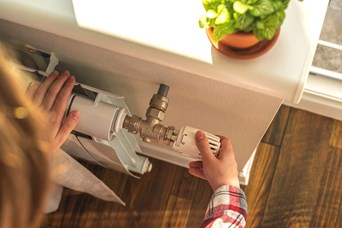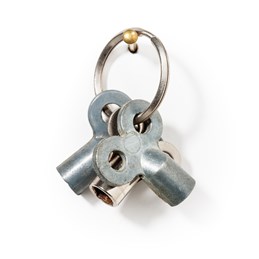How to bleed a radiator
04 February 2024
Our guide to bleeding your radiator
Bubbles in your central heating system can stop hot water from successfully circulating around your home, preventing radiators from reaching their potential heat and making the entire heating process slower.
Trapped air can also cause loud and irritating noises, which may seem more serious. Bleeding the radiators within your home can prevent these issues, and there are several tips to make the procedure simple and quick.

How often should you bleed your radiator?
It is advised that you should bleed your radiator at least once each year, most commonly at the beginning of the winter months. This will enable your system to work to the best of its capacity.
How will I know if my radiators require bleeding?
Once your radiators have heated up, if you feel any cold spots, this could be an indication that there is air trapped inside. Bleeding your radiators should fix this problem.
What else should I check?
Ensure that the thermostatic radiator valve (TRV) is completely on and is not obstructed or covered. These are commonly found at the base or top of your radiator.
Also, ensure that there is no rust on your radiators or potential leaks. This could suggest that there is a larger issue than trapped air.
What do I need to do before I bleed my radiators?
Firstly, turn off your heating. Radiators must be cool enough to touch.
Once you have located what radiators require bleeding by sourcing cold spots, you will need to find a radiator key; radiator keys are relatively small and can be sourced from many DIY stores. Some newer radiators can be bled with a screwdriver.
To bleed your radiators, you will also need a cloth and a tray or pot to collect the water.

What is the bleeding process?
1. Hold your tray or pot below the valve to collect the water, and insert the radiator key into the grooves of the valve.
2. Using a cloth to protect your hands, twist the key (often anti-clockwise). You should hear a hissing noise as air is released. Water should start running.
3. Once water begins to drip out of the valve and the sound of air releasing has stopped, shut off the valve by turning the key in the opposite direction.
4. Ensure that no water has covered the radiator as this could cause rust.
5. Continue to the next radiator and repeat the process.
What do I need to do after I bleed my radiators?
Now you have bled your radiators, switch on your central heating and ensure that your boiler shows the correct boiler pressure.
If the pressure is too low after bleeding, you will need to boost the pressure using the filling loop and instructions from the manufacturer of the boiler itself.
Check that none of the bleed valves are leaking.

The issue has not been resolved. Should I bleed my radiator again?
Occasionally, some radiators may not have correctly bled the first time and could benefit from a second bleeding. However, if the issue still remains, it is important to contact a Gas Safe engineer.
Thankfully, all of our expert engineers are Gas Safe registered, so you can rest assured that you are in good hands with Swale Heating.
How do I know if it has worked?
Recheck that all of your radiators are evenly emitting heat. If you do still hear noises, it could be the cooling and condensing of the system water, which is perfectly normal.
If you still have cold spots on your radiators, you may have a build-up of sludge, which is vital to get removed and treated.
Here at Swale Heating, we are here to offer advice and help concerning all heat related issues. If you struggle with this process, or simply would benefit from more information, you can WhatsApp us on 01795 503604, alternatively, you can log into your online account or use the Live Chat option, where a friendly member of our team will be happy to help.